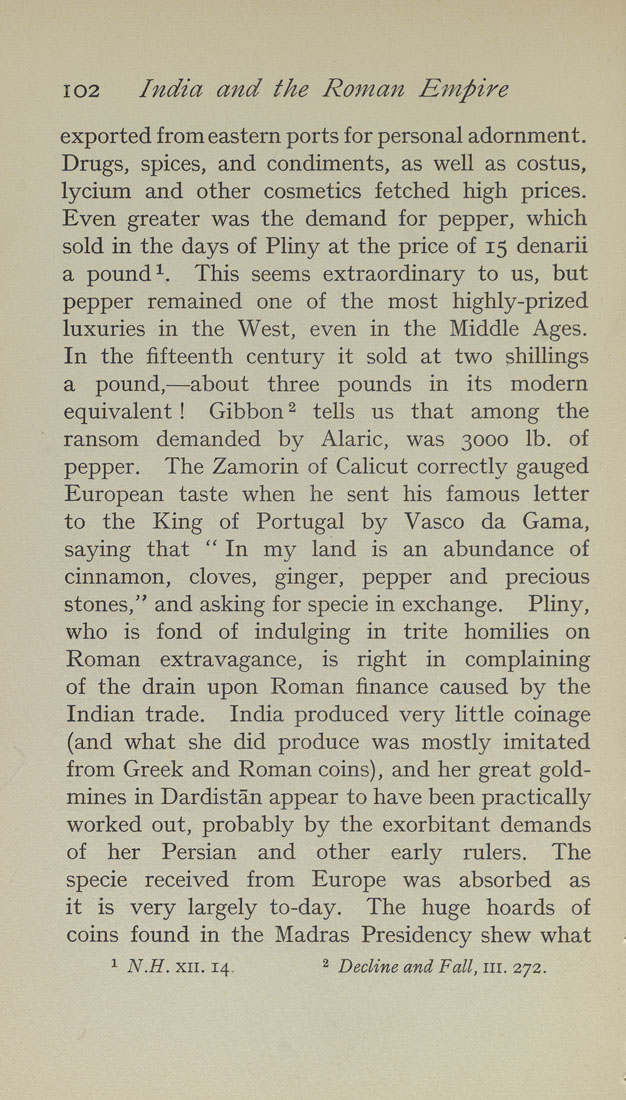I02 India and the Poman Empire
exported from eastern ports for personal adornment.
Drugs, spices, and condiments, as well as costus,
lycium and other cosmetics fetched high prices.
Even greater was the demand for pepper, which
sold in the days of Pliny at the price of 15 denarii
a pound ^. This seems extraordinary to us, but
pepper remained one of the most highly-prized
luxuries in the West, even in the Middle Ages.
In the fifteenth century it sold at two shillings
a pound,—about three pounds in its modern
equivalent ! Gibbon ^ tells us that among the
ransom demanded by Alaric, was 3000 lb. of
pepper. The Zamorin of Calicut correctly gauged
European taste when he sent his famous letter
to the King of Portugal by Vasco da Gama,
saying that '' In my land is an abundance of
cinnamon, cloves, ginger, pepper and precious
stones," and asking for specie in exchange. Pliny,
who is fond of indulging in trite homilies on
Roman extravagance, is right in complaining
of the drain upon Roman finance caused by the
Indian trade. India produced very little coinage
(and what she did produce was mostly imitated
from Greek and Roman coins), and her great gold¬
mines in Dardistan appear to have been practically
worked out, probably by the exorbitant demands
of her Persian and other early rulers. The
specie received from Europe was absorbed as
it is very largely to-day. The huge hoards of
coins found in the Madras Presidency shew what
1 N.H. XII. 14, 2 Decline and Fall, in. 272.
|








